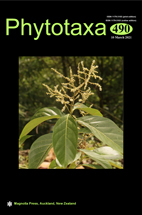Abstract
This study provides a first checklist of the native vascular plant taxa of Djurdjura National Park, based on collections and field visits (2011–2015), with an analysis of its composition and species diversity. The results of floristic analysis outlines the main characteristics of the flora of Djurdjura National Park. It hosts a remarkable species diversity of 757 plant taxa (including 659 species, 95 subspecies, 2 varieties, and 1 forma) belonging to 381 genera in 88 families. Despite covering ca. 0.008% of the total area of Algeria, this national park protects about 17% of the vascular plants of the country. The most represented families are Asteraceae, Fabaceae, Poaceae, Lamiaceae, Apiaceae, Caryophyllaceae, Rosaceae, and Brassicaceae, while the most represented genera are Trifolium (with 15 taxa) and Silene (12). Hemicryptophytes (37.25%) and therophytes (30%) are the most represented life forms among the local flora, a pattern typical of mountainous areas. Mediterranean taxa comprise 64.6%, followed by North African taxa (14%), European (7.53%), and widely distributed taxa (13.87%), which reveals the Mediterranean character of the mountain’s flora. The endemic flora of Djurdjura National Park contains 106 taxa (14%), of which 20 are endemic to Algeria. In addition, six are exclusive and range-restricted to the Djurdjura National Park. Hence, we emphasized a large number of priority taxa (30) of high conservation value. The presence of exclusive endemics, and threatened species, along with high floristic diversity, strengthen the importance of plant conservation in the studied area.

